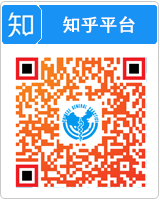中国全科医学 ›› 2025, Vol. 28 ›› Issue (07): 777-796.DOI: 10.12114/j.issn.1007-9572.2024.0548
所属专题: 内分泌代谢性疾病最新文章合辑; 指南/共识最新文章合辑; 生活方式干预相关研究最新文章合集
• 指南·共识 • 下一篇
中华预防医学会糖尿病预防与控制专业委员会
收稿日期:2024-10-14
修回日期:2024-11-21
出版日期:2025-03-05
发布日期:2025-01-23
基金资助:Diabetes Prevention and Control Committee of Chinese Preventive Medicine Association
Received:2024-10-14
Revised:2024-11-21
Published:2025-03-05
Online:2025-01-23
摘要: 行为与生活方式干预(behavior and lifestyle interventions,BLIs)可以降低血糖和血压,调节血脂,控制肥胖,减少心血管事件,是糖尿病等慢性病的一线治疗措施。BLIs包括帮助患者维护健康饮食、坚持体育锻炼、保持正常体重、保证良好睡眠、避免吸烟和酗酒、做好心理调适、建立良好的社会支持、进行科学的血糖自我监测、坚持降糖药治疗等。除了出现严重高血糖及糖尿病急性并发症需要立即进行药物治疗外,新诊断的2型糖尿病患者应首先进行BLIs。BLIs应遵循有效性、建立互信、问题解决导向、综合性和个性化原则。常用干预策略包括应用成熟的行为改变理论、使用行为改变技术、有效运用传播策略、提高患者行为技能、实施以人为本的患者自我管理教育和支持。基本步骤包括行为与生活方式及其影响因素评估、确定行为目标、制定干预实施方案、实施干预和评价效果。BLIs效果评价指标包括过程指标、临床结局、社会心理、行为结局、患者报告和健康结局。效果评价可采用定性和定量相结合的方法进行,常用的评价工具包括糖尿病自我护理行为评价量表(summary of diabetes self-care activities,SDSCA)、患者行为量表(patient activation measurement,PAM)和糖尿病管理自我效能量表(diabetes management self-efficacy scale,DMSES)。
中图分类号:
| 锻炼类型 | 种类 | 强度 | 频率 | 时长 | 进展 |
|---|---|---|---|---|---|
| 有氧运动 | 散步、慢跑、骑自行车、游泳、舞蹈、间歇训练(在每次锻炼过程中高强度锻炼与低强度锻炼交替进行) | 40%~59%的VO2R或H R R(中度),RPE ;或60%~89%的VO2R或H R R(剧烈),RPE | 3~7 d/周,活动间隔不超过连续2 d | 至少150~300 min/周的中等强度运动或75~150 min的剧烈运动,或其等效组合 | 进展速度取决于基线健康状况、年龄、体重、当前健康状况和个人目标;建议强度和频率逐渐递增 |
| 阻力训练 | 哑铃、器械、弹力带或俯卧撑;应进行8~10次涉及主要肌群的锻炼 | 中等强度1-RM(最多可重复次数)的50% ~69%,或剧烈1-RM的70%~85% | 2~3 d/周,间断进行 | 每组重复10~15次,每种特定运动1~3次 | 根据身体耐受力情况;首先增加阻力,然后增加更多的组数,然后增加训练频率 |
| 柔韧性训练 | 静态、动态或PNF拉伸;平衡练习;瑜伽和太极 | 拉伸至紧绷或轻微不适 | ≥2~3 d/周;通常在肌肉和关节热身时进行 | 10~30 s/拉伸(静态或动态)组;每组重复2~4次 | 根据身体耐受力情况;只要不疼痛,就可以增加拉伸范围 |
| 平衡训练 | 下半身和核心阻力练习,瑜伽和太极拳也能改善平衡 | 无固定强度要求 | ≥2~3 d/周 | 无固定时长要求 | 根据身体耐受性;在练习过程中应特别留意,避免跌倒 |
表1 糖尿病患者推荐身体活动[41,44]
Table 1 Recommended physical activities for diabetic patients
| 锻炼类型 | 种类 | 强度 | 频率 | 时长 | 进展 |
|---|---|---|---|---|---|
| 有氧运动 | 散步、慢跑、骑自行车、游泳、舞蹈、间歇训练(在每次锻炼过程中高强度锻炼与低强度锻炼交替进行) | 40%~59%的VO2R或H R R(中度),RPE ;或60%~89%的VO2R或H R R(剧烈),RPE | 3~7 d/周,活动间隔不超过连续2 d | 至少150~300 min/周的中等强度运动或75~150 min的剧烈运动,或其等效组合 | 进展速度取决于基线健康状况、年龄、体重、当前健康状况和个人目标;建议强度和频率逐渐递增 |
| 阻力训练 | 哑铃、器械、弹力带或俯卧撑;应进行8~10次涉及主要肌群的锻炼 | 中等强度1-RM(最多可重复次数)的50% ~69%,或剧烈1-RM的70%~85% | 2~3 d/周,间断进行 | 每组重复10~15次,每种特定运动1~3次 | 根据身体耐受力情况;首先增加阻力,然后增加更多的组数,然后增加训练频率 |
| 柔韧性训练 | 静态、动态或PNF拉伸;平衡练习;瑜伽和太极 | 拉伸至紧绷或轻微不适 | ≥2~3 d/周;通常在肌肉和关节热身时进行 | 10~30 s/拉伸(静态或动态)组;每组重复2~4次 | 根据身体耐受力情况;只要不疼痛,就可以增加拉伸范围 |
| 平衡训练 | 下半身和核心阻力练习,瑜伽和太极拳也能改善平衡 | 无固定强度要求 | ≥2~3 d/周 | 无固定时长要求 | 根据身体耐受性;在练习过程中应特别留意,避免跌倒 |
| 序号 | 行为改变技术 | 定义 |
|---|---|---|
| 1 | 目标设定(行为) | 设定或商定要实现的行为目标 |
| 2 | 目标设定(结果) | 设定或商定行为的效果目标 |
| 3 | 行动计划 | 及时对行为实施进行详细规划(包括情景、频率、持续时间和强度)。情景可以是环境(物理或社会)或内部(身体、情感或认知) |
| 4 | 当前行为和目标之间的差异 | 提请个人注意当前的行为(在行为的形式、频率、持续时间或强度方面)与本人之前设定的结果目标、行为目标或行动计划之间的差异(不仅是在行为的自我监控方面) |
| 5 | 对行为的反馈 | 监测并提供关于行为表现的信息性或评估性反馈(如形式、频率、持续时间、强度) |
| 6 | 行为的自我监控 | 为个人设定监控和记录其行为的方法 |
| 7 | 行为结果的自我监控 | 为个人设定监控和记录其行为结果的方法 |
| 8 | 对行为监测结果的反馈 | 监测并提供行为结果的反馈 |
| 9 | 社会支持(未特指) | 建议、安排或提供社会支持(如来自朋友、亲戚、同事、"伙伴"或工作人员)或对行为表现进行赞扬或奖励,包括鼓励和咨询,但仅限于针对行为的情况 |
| 10 | 有关健康后果的信息 | 提供有关行为健康结局的相关信息(如书面、口头、视觉) |
| 11 | 后果的突出性 | 强调行为的后果,目的是使其更令人难忘(不仅仅是告知后果) |
| 12 | 情绪后果的监测 | 在尝试实施行为后及时评估情绪 |
| 13 | 关于情绪后果的信息 | 提供关于行为的情绪后果的相关信息(如书面、口头、视觉) |
| 14 | 提示/标识 | 为行为实施设立环境提醒,包括时间和地点 |
| 15 | 减少提示/提醒 | 逐步撤销提示以使其形成自觉的行为习惯 |
| 16 | 设置分级任务 | 把行为任务进行分解,逐步增加难度 |
| 17 | 信息来源的可信性 | 提供支持或反对某行为来源可信性的口头或视觉信息 |
| 18 | 物质激励(行为) | 告知个人如果其在执行某行为方面付出了努力和/或取得进展,将奖励其金钱、代金券或其他贵重物品 |
| 19 | 物质奖励(行为) | 为个人执行行为方面付出的努力和/或取得了进展奖励金钱、代金券或其他贵重物品 |
| 20 | 非特定性奖励 | 如果在执行行为方面付出努力和/或取得进展,就对其进行奖励 |
| 21 | 非特定激励 | 告知患者如果且仅当在执行行为方面付出了努力和/或取得了进展时,将提供奖励 |
| 22 | 激励(结果) | 告知只有在实现行为结果方面付出了努力和/或取得了进展的情况下,才会提供奖励 |
| 23 | 奖励(结果) | 当且仅当在实现行为结果方面付出了努力和/或取得了进展时,对其进行奖励 |
| 24 | 未来的惩罚 | 告知未来的惩罚或取消奖励将是一种患者不想要的行为结果 |
| 25 | 节约心理资源 | 就如何最大限度地减少对心理资源的需求以促进行为改变提供建议 |
| 26 | 重组物理环境 | 改变,或建议改变物理环境,以促进想要的行为表现或为不想要的行为制造障碍 |
| 27 | 将自己视为榜样 | 告知其自己的行为可能是他人的榜样 |
| 28 | 奖励进步 | 只要做出类似的行为,就给予奖励 |
| 29 | 减少奖励频率 | 根据行为持续时间或频率的增加而给予奖励 |
表2 常用行为改变技术及其定义[138]
Table 2 Common behavior change techniques and their definitions
| 序号 | 行为改变技术 | 定义 |
|---|---|---|
| 1 | 目标设定(行为) | 设定或商定要实现的行为目标 |
| 2 | 目标设定(结果) | 设定或商定行为的效果目标 |
| 3 | 行动计划 | 及时对行为实施进行详细规划(包括情景、频率、持续时间和强度)。情景可以是环境(物理或社会)或内部(身体、情感或认知) |
| 4 | 当前行为和目标之间的差异 | 提请个人注意当前的行为(在行为的形式、频率、持续时间或强度方面)与本人之前设定的结果目标、行为目标或行动计划之间的差异(不仅是在行为的自我监控方面) |
| 5 | 对行为的反馈 | 监测并提供关于行为表现的信息性或评估性反馈(如形式、频率、持续时间、强度) |
| 6 | 行为的自我监控 | 为个人设定监控和记录其行为的方法 |
| 7 | 行为结果的自我监控 | 为个人设定监控和记录其行为结果的方法 |
| 8 | 对行为监测结果的反馈 | 监测并提供行为结果的反馈 |
| 9 | 社会支持(未特指) | 建议、安排或提供社会支持(如来自朋友、亲戚、同事、"伙伴"或工作人员)或对行为表现进行赞扬或奖励,包括鼓励和咨询,但仅限于针对行为的情况 |
| 10 | 有关健康后果的信息 | 提供有关行为健康结局的相关信息(如书面、口头、视觉) |
| 11 | 后果的突出性 | 强调行为的后果,目的是使其更令人难忘(不仅仅是告知后果) |
| 12 | 情绪后果的监测 | 在尝试实施行为后及时评估情绪 |
| 13 | 关于情绪后果的信息 | 提供关于行为的情绪后果的相关信息(如书面、口头、视觉) |
| 14 | 提示/标识 | 为行为实施设立环境提醒,包括时间和地点 |
| 15 | 减少提示/提醒 | 逐步撤销提示以使其形成自觉的行为习惯 |
| 16 | 设置分级任务 | 把行为任务进行分解,逐步增加难度 |
| 17 | 信息来源的可信性 | 提供支持或反对某行为来源可信性的口头或视觉信息 |
| 18 | 物质激励(行为) | 告知个人如果其在执行某行为方面付出了努力和/或取得进展,将奖励其金钱、代金券或其他贵重物品 |
| 19 | 物质奖励(行为) | 为个人执行行为方面付出的努力和/或取得了进展奖励金钱、代金券或其他贵重物品 |
| 20 | 非特定性奖励 | 如果在执行行为方面付出努力和/或取得进展,就对其进行奖励 |
| 21 | 非特定激励 | 告知患者如果且仅当在执行行为方面付出了努力和/或取得了进展时,将提供奖励 |
| 22 | 激励(结果) | 告知只有在实现行为结果方面付出了努力和/或取得了进展的情况下,才会提供奖励 |
| 23 | 奖励(结果) | 当且仅当在实现行为结果方面付出了努力和/或取得了进展时,对其进行奖励 |
| 24 | 未来的惩罚 | 告知未来的惩罚或取消奖励将是一种患者不想要的行为结果 |
| 25 | 节约心理资源 | 就如何最大限度地减少对心理资源的需求以促进行为改变提供建议 |
| 26 | 重组物理环境 | 改变,或建议改变物理环境,以促进想要的行为表现或为不想要的行为制造障碍 |
| 27 | 将自己视为榜样 | 告知其自己的行为可能是他人的榜样 |
| 28 | 奖励进步 | 只要做出类似的行为,就给予奖励 |
| 29 | 减少奖励频率 | 根据行为持续时间或频率的增加而给予奖励 |
| 序号 | 课程内容 |
|---|---|
| 1 | 糖尿病的病理生理和治疗方案 |
| 2 | 社会心理应对技术 |
| 3 | 健康饮食 |
| 4 | 保持身体活跃 |
| 5 | 服药方法 |
| 6 | 自我监测 |
| 7 | 减少并发症风险 |
| 8 | 问题解决 |
| 9 | 行为改变策略 |
表3 糖尿病患者自我管理教育和支持(DSMES)课程内容[70,147]
Table 3 The content of diabetes self-management education and support courses
| 序号 | 课程内容 |
|---|---|
| 1 | 糖尿病的病理生理和治疗方案 |
| 2 | 社会心理应对技术 |
| 3 | 健康饮食 |
| 4 | 保持身体活跃 |
| 5 | 服药方法 |
| 6 | 自我监测 |
| 7 | 减少并发症风险 |
| 8 | 问题解决 |
| 9 | 行为改变策略 |
| 序号 | 关键点 |
|---|---|
| 1 | 以证据为基础 |
| 2 | 注重个性化需求,包括语言习惯和文化背景 |
| 3 | 书面课程和辅助材料以理论为指导 |
| 4 | 由经过培训且有资质和能力的个人(即糖尿病管理和教育专家)提供 |
| 5 | 以团体或个人形式提供,符合当地人口需求 |
| 6 | 支持患者及其家人培养自我管理糖尿病的态度、信念、知识和技能 |
| 7 | 包括核心内容,即糖尿病病理生理学和治疗方案;药物治疗;监测、预防、检测和治疗急性和慢性并发症;健康应对心理问题和关切;解决问题和处理特殊情况(如旅行、禁食) |
| 8 | 在关键时刻(即诊断时、每年、出现并发症时和护理转接期间)可供个人使用 |
| 9 | 包括对糖尿病进展的监测,如健康状况、生活质量 |
| 10 | 定期审核工作质量 |
表4 糖尿病患者自我管理教育和支持(DSMES)的关键点[70]
Table 4 Key points of diabetes self-management education and support
| 序号 | 关键点 |
|---|---|
| 1 | 以证据为基础 |
| 2 | 注重个性化需求,包括语言习惯和文化背景 |
| 3 | 书面课程和辅助材料以理论为指导 |
| 4 | 由经过培训且有资质和能力的个人(即糖尿病管理和教育专家)提供 |
| 5 | 以团体或个人形式提供,符合当地人口需求 |
| 6 | 支持患者及其家人培养自我管理糖尿病的态度、信念、知识和技能 |
| 7 | 包括核心内容,即糖尿病病理生理学和治疗方案;药物治疗;监测、预防、检测和治疗急性和慢性并发症;健康应对心理问题和关切;解决问题和处理特殊情况(如旅行、禁食) |
| 8 | 在关键时刻(即诊断时、每年、出现并发症时和护理转接期间)可供个人使用 |
| 9 | 包括对糖尿病进展的监测,如健康状况、生活质量 |
| 10 | 定期审核工作质量 |
| 分类 | 评价指标 |
|---|---|
| 过程指标 | 推荐流程情况 |
| 出席情况 | |
| 教育流程 | |
| 健康的社会决定因素 | |
| 教育课程的时间安排(如满足糖尿病患者需求的时间) | |
| 临床结局 | HbA1c |
| 低血糖时间 | |
| 妊娠结局 | |
| LDL-C水平 | |
| 体质指数和体重 | |
| 血压 | |
| TIR | |
| 心理社会和行为 | 结局 |
| 健康应对 | |
| 健康饮食 | |
| 活跃 | |
| 服用药物 | |
| 自我监控 | |
| 降低风险 | |
| 解决问题 | |
| 患者报告的结果 | 与健康相关的生活质量 |
| 糖尿病相关的生活质量 | |
| 糖尿病痛苦 | |
| 自我效能感 | |
| 生理功能状态 | |
| 生活满意度 | |
| 患者生成的健康数据 | 血糖趋势 |
| CGM葡萄糖管理指标 | |
| 体重、活动、步数 | |
| 食物/饮料摄入量 | |
| 睡眠 | |
| 血压 |
表5 糖尿病患者自我管理教育和支持(DSMES)效果评价指标
Table 5 Evaluation indicators for the effect of diabetes self-management education and support
| 分类 | 评价指标 |
|---|---|
| 过程指标 | 推荐流程情况 |
| 出席情况 | |
| 教育流程 | |
| 健康的社会决定因素 | |
| 教育课程的时间安排(如满足糖尿病患者需求的时间) | |
| 临床结局 | HbA1c |
| 低血糖时间 | |
| 妊娠结局 | |
| LDL-C水平 | |
| 体质指数和体重 | |
| 血压 | |
| TIR | |
| 心理社会和行为 | 结局 |
| 健康应对 | |
| 健康饮食 | |
| 活跃 | |
| 服用药物 | |
| 自我监控 | |
| 降低风险 | |
| 解决问题 | |
| 患者报告的结果 | 与健康相关的生活质量 |
| 糖尿病相关的生活质量 | |
| 糖尿病痛苦 | |
| 自我效能感 | |
| 生理功能状态 | |
| 生活满意度 | |
| 患者生成的健康数据 | 血糖趋势 |
| CGM葡萄糖管理指标 | |
| 体重、活动、步数 | |
| 食物/饮料摄入量 | |
| 睡眠 | |
| 血压 |
| 参与者姓名:____________________ 出生日期:____________________ 日期:____________________ | |
|---|---|
| 评估/量表:1=需求说明,2=需求评审,3=理解关键点,4=证明理解/能力。NC=未涵盖,N/A=不适用。 | |
| 糖尿病自我管理教育和支持参与者记录 | |
| 主题:____________________ | |
| 学习目标:____________________ | |
| 教育前评估/教育计划:____________________ | |
| 教育结果:____________________ | |
| 评估项目 | 评估内容 |
| 糖尿病病理生理学 | 定义糖尿病并确定自己的糖尿病类型;列出3种治疗糖尿病的方法 |
| 健康饮食 | 描述食物的种类、数量和时间对血糖的影响;列出3种计划膳食的方法 |
| 身体活跃 | 运动状态对血糖水平的影响 |
| 服用药物 | 糖尿病药物对糖尿病的影响;名称;药物的服用、作用和不良反应 |
| 血糖监测 | 确定推荐的血糖目标和个人目标 |
| 急性并发症 | 列出高血糖和低血糖的症状和治疗、糖尿病酮症酸中毒、病假指南和恶劣天气或病情危机指南以及糖尿病服务管理 |
| 慢性并发症 | 明确血糖水平与糖尿病长期并发症的关系以及筛查和预防措施 |
| 生活方式与健康应对 | 描述促进糖尿病自我管理的生活方式和健康应对策略 |
| 糖尿病痛苦和支持 | |
| 识别糖尿病痛苦并能够寻求帮助 | |
| 参与者选择的行为目标和结果:____________________________________ | |
| 临床或生活质量结局:______________________________ | |
| 评论:_________________________________ | |
| 将DSMES教育和结果传达给推荐提供者或DSMES服务之外的其他医护人员 | |
| 临床医生签名:__________________ | |
表6 患者教育咨询效果评估表[148]
Table 6 Evaluation of patient education and consultation effectiveness
| 参与者姓名:____________________ 出生日期:____________________ 日期:____________________ | |
|---|---|
| 评估/量表:1=需求说明,2=需求评审,3=理解关键点,4=证明理解/能力。NC=未涵盖,N/A=不适用。 | |
| 糖尿病自我管理教育和支持参与者记录 | |
| 主题:____________________ | |
| 学习目标:____________________ | |
| 教育前评估/教育计划:____________________ | |
| 教育结果:____________________ | |
| 评估项目 | 评估内容 |
| 糖尿病病理生理学 | 定义糖尿病并确定自己的糖尿病类型;列出3种治疗糖尿病的方法 |
| 健康饮食 | 描述食物的种类、数量和时间对血糖的影响;列出3种计划膳食的方法 |
| 身体活跃 | 运动状态对血糖水平的影响 |
| 服用药物 | 糖尿病药物对糖尿病的影响;名称;药物的服用、作用和不良反应 |
| 血糖监测 | 确定推荐的血糖目标和个人目标 |
| 急性并发症 | 列出高血糖和低血糖的症状和治疗、糖尿病酮症酸中毒、病假指南和恶劣天气或病情危机指南以及糖尿病服务管理 |
| 慢性并发症 | 明确血糖水平与糖尿病长期并发症的关系以及筛查和预防措施 |
| 生活方式与健康应对 | 描述促进糖尿病自我管理的生活方式和健康应对策略 |
| 糖尿病痛苦和支持 | |
| 识别糖尿病痛苦并能够寻求帮助 | |
| 参与者选择的行为目标和结果:____________________________________ | |
| 临床或生活质量结局:______________________________ | |
| 评论:_________________________________ | |
| 将DSMES教育和结果传达给推荐提供者或DSMES服务之外的其他医护人员 | |
| 临床医生签名:__________________ | |
| 患者的健康目标 |
| 1.健康目标:__________________________________ |
| 为了实现这个目标,我会:每天多少次/分钟?还是每周? |
| 2.健康目标:_________________________ |
| 为了实现这个目标,我将:(每天/每周多少次/分钟?还是每周?) |
| 临床或生活质量基线:___________ |
| 随访日期:___________ |
| 达到行为目标1:所有时间/大部分时间/一半时间/偶尔/从不 |
| 达到行为目标2:所有时间/大多数时间/一半时间/偶尔/从不 |
| 临床或生活质量:___________ |
| 临床医生签名:___________ |
| 日期:___________ |
表7 行为结果随访记录表[148]
Table 7 Follow up record of behavioral results
| 患者的健康目标 |
| 1.健康目标:__________________________________ |
| 为了实现这个目标,我会:每天多少次/分钟?还是每周? |
| 2.健康目标:_________________________ |
| 为了实现这个目标,我将:(每天/每周多少次/分钟?还是每周?) |
| 临床或生活质量基线:___________ |
| 随访日期:___________ |
| 达到行为目标1:所有时间/大部分时间/一半时间/偶尔/从不 |
| 达到行为目标2:所有时间/大多数时间/一半时间/偶尔/从不 |
| 临床或生活质量:___________ |
| 临床医生签名:___________ |
| 日期:___________ |
| 姓名: | 其他称谓: | 出生日期:______年______月______日 | |
| 糖尿病类型: | 何时诊断? | 家里还有谁是糖尿病患者? | |
| 本次就诊日期: | 上次就诊日期: | ||
| 婚姻状况:单身□已婚□离异□丧偶□ | 家里还有谁? | ||
| 您是否有工作?是□否□ | 工作类型: | 工作时长: | |
| 普通话程度: | 民族: | ||
| 会读/写吗?是□否□ | 学习障碍:视□听□读□写□语言□ | ||
| 喜欢如何沟通?书面材料□口头讨论□视频□ | |||
| 是否吸烟?否□是□ | 平均每天烟量__________(支) | ||
| 是否饮酒?否□是□ | 平均每天酒精量________(克) | ||
| 如果有压力或痛苦,对生活方式会产生什么影响? | |||
| 糖尿病痛苦支持情况 | 如何评价你的身体健康状况?优秀□好□一般□差□ | ||
| 糖尿病的哪些方面让您感受压力或痛苦? | |||
| 平时如何应对这种压力/痛苦? | |||
| 给予患者心理支持的主要是谁? | |||
| 身体活动/体育活动情况 | 身高:______厘米 | 体重:______公斤 | 腰围:______厘米 |
| 经常做什么体育活动? | |||
| 如果有身体活动困难,您怎么办? | |||
| 慢性并发症疾病史 | 是否有医保? | 是否看病检查诊断过? | 时间: |
| 心脏疾病: | 高血压: | 卒中: | |
| 呼吸系统问题: | 肾脏问题: | 糖尿病足: | |
| 反复发生感染性疾病: | 勃起功能障碍: | ||
| 血液化验指标 | 最近测到的HbA1c水平(数值/日期): | ||
| 血脂谱:TC:_______ LDL:_______ TG:_______ HDL:_______ | |||
| 肾小球滤过率: | |||
| 血糖监测和健康知识 | SMBG次数? | ||
| 血糖/CGM仪器名称/型号: | |||
| 如果使用CGM,TIR目标是什么? | |||
| 注意血糖波动情况: | |||
| 早餐血糖(餐前或后): | |||
| 午餐血糖(餐前或后): | |||
| 晚餐血糖(餐前或后): | |||
| 血糖控制目标水平? | |||
| HbA1c控制目标水平? | |||
| 急性并发症的预防检测治疗 | 是否与糖尿病直接相关? | ||
| 有高血糖(≥16.7 mmol/L)吗? | 发生频次? | ||
| 治疗高血糖的方式? | |||
| 是否发生过糖尿病酮症酸中毒? | 具体时间: | ||
| 是否发生过糖尿病酮症? | 如是,您会怎么做? | ||
| 是否发生过低血糖吗? | 发生频次? | 发生时间? | |
| 治疗和健康知识 | 看眼科大夫了吗? | 上次就诊日期: | |
| 看口腔科大夫了吗? | 上次就诊日期: | ||
| 临床医生检查脚了吗? | 上次就诊日期: | ||
| 糖尿病口服药物名称/剂量: | |||
| 服用的药物会导致低血糖发生吗?否□是□ | |||
| 糖尿病胰岛素用药:类型/注射时间/剂量/剂量显示方式/注射部位/药物储存/是否有低血糖发生?导致低血糖的危险因素? | |||
| 是否怀孕了? | 如果是,预产期是什么时候? | ||
| 妊娠并发症有哪些? | |||
| 是否有怀孕计划? | |||
| 健康饮食和健康素养 | 饮食习惯(包括食物种类、数量、食用时间): | ||
| 知道哪些食物会升高血糖吗? | |||
| 谁负责购物/做饭? | |||
| 能读懂食品说明内容吗? | |||
| 有没有食物过敏/胃肠道疾病? | |||
| 每日进餐包括:早餐□午餐□晚餐□零食□ | |||
| 是否需要营养师指导饮食干预? | |||
| 患者是否接受过糖尿病健康教育? | 时间/地点: | ||
| 患者学习的目标是什么? | |||
| 教育者(Educator)或医生或护士签名: | 日期: | ||
表8 糖尿病患者自我管理教育和支持(DSMES)患者评估表[148]
Table 8 Patient evaluation form of DSMES
| 姓名: | 其他称谓: | 出生日期:______年______月______日 | |
| 糖尿病类型: | 何时诊断? | 家里还有谁是糖尿病患者? | |
| 本次就诊日期: | 上次就诊日期: | ||
| 婚姻状况:单身□已婚□离异□丧偶□ | 家里还有谁? | ||
| 您是否有工作?是□否□ | 工作类型: | 工作时长: | |
| 普通话程度: | 民族: | ||
| 会读/写吗?是□否□ | 学习障碍:视□听□读□写□语言□ | ||
| 喜欢如何沟通?书面材料□口头讨论□视频□ | |||
| 是否吸烟?否□是□ | 平均每天烟量__________(支) | ||
| 是否饮酒?否□是□ | 平均每天酒精量________(克) | ||
| 如果有压力或痛苦,对生活方式会产生什么影响? | |||
| 糖尿病痛苦支持情况 | 如何评价你的身体健康状况?优秀□好□一般□差□ | ||
| 糖尿病的哪些方面让您感受压力或痛苦? | |||
| 平时如何应对这种压力/痛苦? | |||
| 给予患者心理支持的主要是谁? | |||
| 身体活动/体育活动情况 | 身高:______厘米 | 体重:______公斤 | 腰围:______厘米 |
| 经常做什么体育活动? | |||
| 如果有身体活动困难,您怎么办? | |||
| 慢性并发症疾病史 | 是否有医保? | 是否看病检查诊断过? | 时间: |
| 心脏疾病: | 高血压: | 卒中: | |
| 呼吸系统问题: | 肾脏问题: | 糖尿病足: | |
| 反复发生感染性疾病: | 勃起功能障碍: | ||
| 血液化验指标 | 最近测到的HbA1c水平(数值/日期): | ||
| 血脂谱:TC:_______ LDL:_______ TG:_______ HDL:_______ | |||
| 肾小球滤过率: | |||
| 血糖监测和健康知识 | SMBG次数? | ||
| 血糖/CGM仪器名称/型号: | |||
| 如果使用CGM,TIR目标是什么? | |||
| 注意血糖波动情况: | |||
| 早餐血糖(餐前或后): | |||
| 午餐血糖(餐前或后): | |||
| 晚餐血糖(餐前或后): | |||
| 血糖控制目标水平? | |||
| HbA1c控制目标水平? | |||
| 急性并发症的预防检测治疗 | 是否与糖尿病直接相关? | ||
| 有高血糖(≥16.7 mmol/L)吗? | 发生频次? | ||
| 治疗高血糖的方式? | |||
| 是否发生过糖尿病酮症酸中毒? | 具体时间: | ||
| 是否发生过糖尿病酮症? | 如是,您会怎么做? | ||
| 是否发生过低血糖吗? | 发生频次? | 发生时间? | |
| 治疗和健康知识 | 看眼科大夫了吗? | 上次就诊日期: | |
| 看口腔科大夫了吗? | 上次就诊日期: | ||
| 临床医生检查脚了吗? | 上次就诊日期: | ||
| 糖尿病口服药物名称/剂量: | |||
| 服用的药物会导致低血糖发生吗?否□是□ | |||
| 糖尿病胰岛素用药:类型/注射时间/剂量/剂量显示方式/注射部位/药物储存/是否有低血糖发生?导致低血糖的危险因素? | |||
| 是否怀孕了? | 如果是,预产期是什么时候? | ||
| 妊娠并发症有哪些? | |||
| 是否有怀孕计划? | |||
| 健康饮食和健康素养 | 饮食习惯(包括食物种类、数量、食用时间): | ||
| 知道哪些食物会升高血糖吗? | |||
| 谁负责购物/做饭? | |||
| 能读懂食品说明内容吗? | |||
| 有没有食物过敏/胃肠道疾病? | |||
| 每日进餐包括:早餐□午餐□晚餐□零食□ | |||
| 是否需要营养师指导饮食干预? | |||
| 患者是否接受过糖尿病健康教育? | 时间/地点: | ||
| 患者学习的目标是什么? | |||
| 教育者(Educator)或医生或护士签名: | 日期: | ||
| 登记信息 | 记录内容 |
|---|---|
| 地点 | |
| 临床特征 | |
| 健康史 | |
| 认知水平 | |
| 功能性健康素养和计算能力 | |
| 糖尿病痛苦和社会支持情况 | |
| 描述糖尿病病理生理学的能力 | |
| 将健康饮食融入生活方式的能力 | |
| 将运动融入生活方式的能力 | |
| 安全服药的能力 | |
| 能够监测血糖并解释和使用结果 | |
| 预防、检测和治疗急性并发症的能力 | |
| 预防、检测和治疗慢性并发症的能力 | |
| 适应生活方式的能力 | |
| 健康应对示例 | |
| 社会心理和自我护理行为 | |
| 情绪反应、文化影响、健康信念、健康行为、生活方式、学习障碍、相关社会经济因素 | |
| 识别糖尿病痛苦并寻求帮助的能力 |
表9 糖尿病患者行为能力登记表
Table 9 Patient evaluation of DSMES
| 登记信息 | 记录内容 |
|---|---|
| 地点 | |
| 临床特征 | |
| 健康史 | |
| 认知水平 | |
| 功能性健康素养和计算能力 | |
| 糖尿病痛苦和社会支持情况 | |
| 描述糖尿病病理生理学的能力 | |
| 将健康饮食融入生活方式的能力 | |
| 将运动融入生活方式的能力 | |
| 安全服药的能力 | |
| 能够监测血糖并解释和使用结果 | |
| 预防、检测和治疗急性并发症的能力 | |
| 预防、检测和治疗慢性并发症的能力 | |
| 适应生活方式的能力 | |
| 健康应对示例 | |
| 社会心理和自我护理行为 | |
| 情绪反应、文化影响、健康信念、健康行为、生活方式、学习障碍、相关社会经济因素 | |
| 识别糖尿病痛苦并寻求帮助的能力 |
| 评价指标 | 例子 |
|---|---|
| 过程指标 | 与患者沟通情况;患者的意见反馈;患者出席活动情况;社会支持情况 |
| 临床结局 | 体重;HbA1c;血压;低血糖时间;妊娠结局;胆固醇水平 |
| 社会心理和行为结局 | 服药情况;自我监测情况;积极性;健康应对;健康饮食;问题解决情况 |
| 患者报告 | 患者生活质量改善情况;心理情绪困扰情况;自我效能情况;满意度 |
| 健康结局 | 血糖控制情况;血压;体重;运动量;食物/饮料摄入量;睡眠质量等 |
表10 糖尿病患者行为与生活方式干预效果评价指标[68]
Table 10 Evaluation indicators for the effect of behavioral and lifestyle intervention in diabetic patients
| 评价指标 | 例子 |
|---|---|
| 过程指标 | 与患者沟通情况;患者的意见反馈;患者出席活动情况;社会支持情况 |
| 临床结局 | 体重;HbA1c;血压;低血糖时间;妊娠结局;胆固醇水平 |
| 社会心理和行为结局 | 服药情况;自我监测情况;积极性;健康应对;健康饮食;问题解决情况 |
| 患者报告 | 患者生活质量改善情况;心理情绪困扰情况;自我效能情况;满意度 |
| 健康结局 | 血糖控制情况;血压;体重;运动量;食物/饮料摄入量;睡眠质量等 |
| [85] |
|
| [86] |
|
| [87] |
|
| [88] |
|
| [89] |
|
| [90] |
|
| [91] |
|
| [92] |
International Diabetes Federation. International Diabetes Federation language philosophy:technical document[EB/OL]. [2024-06-10].
|
| [93] |
|
| [1] |
中华医学会内分泌学分会,中华医学会糖尿病学分会,中国医师协会内分泌代谢科医师分会. 中国成人糖尿病前期干预的专家共识(2023版)[J]. 中华糖尿病杂志,2023,15(6):484-494. DOI:10.3760/cma.j.cn115791-20230509-00188.
|
| [2] |
中华医学会糖尿病学分会. 中国2型糖尿病防治指南(2020年版)[J]. 中华糖尿病杂志,2021,13(4):315-409. DOI:10.3760/cma.j.cn115791-20210221-00095.
|
| [3] |
|
| [4] |
|
| [5] |
|
| [6] |
|
| [7] |
|
| [8] |
|
| [9] |
|
| [10] |
|
| [94] |
|
| [95] |
|
| [96] |
Agency for Healthcare Research and Quality. The SHARE approach:a model for shared decision making-fact sheet[EB/OL].(2020-09-01)[2024-07-12].
|
| [97] |
|
| [98] |
|
| [99] |
|
| [100] |
|
| [101] |
|
| [102] |
|
| [11] |
|
| [12] |
|
| [13] |
|
| [14] |
|
| [15] |
|
| [16] |
|
| [17] |
|
| [18] |
|
| [19] |
|
| [103] |
|
| [104] |
|
| [105] |
|
| [106] |
|
| [107] |
|
| [108] |
|
| [109] |
|
| [110] |
|
| [111] |
|
| [20] |
|
| [21] |
|
| [22] |
|
| [23] |
|
| [24] |
|
| [25] |
|
| [26] |
AMERICAN DIABETES ASSOCIATION PROFESSIONAL PRACTICE COMMITTEE. Erratum. 5. facilitating positive health behaviors and well-being to improve health outcomes:standards of care in diabetes-2024[J]. Diabetes Care,2024,47(4):761-762. DOI:10.2337/dc24-er04.
|
| [27] |
TODAY STUDY GROUP,
|
| [28] |
American Diabetes Association Professional Practice Committee. 5.facilitating behavior change and well-being to improve health outcomes:standards of medical care in diabetes-2022[J]. Diabetes Care,2022,45(s1):s60-82. DOI:10.2337/dc22-S005.
|
| [29] |
|
| [112] |
|
| [113] |
|
| [114] |
|
| [115] |
|
| [116] |
|
| [117] |
|
| [118] |
|
| [119] |
|
| [120] |
|
| [30] |
|
| [31] |
American Diabetes Association. Standards of medical care in diabetes-2021 abridged for primary care providers[J]. Clin Diabetes,2021,39(1):14-43. DOI:10.2337/cd21-as01.
|
| [32] |
|
| [33] |
PMID |
| [34] |
|
| [35] |
|
| [36] |
|
| [37] |
|
| [38] |
|
| [39] |
|
| [40] |
|
| [41] |
|
| [42] |
|
| [43] |
|
| [44] |
|
| [45] |
国家老年医学中心,中华医学会糖尿病学分会,中国体育科学学会. 中国2型糖尿病运动治疗指南(2024版)[J]. 中华糖尿病杂志,2024,16(6):616-647. DOI:10.3760/cma.j.cn115791-20240528-00294.
|
| [46] |
|
| [47] |
|
| [48] |
|
| [49] |
|
| [50] |
|
| [51] |
|
| [52] |
|
| [53] |
|
| [54] |
International Diabetes Federation. The IDF consensus statement on sleep apnoea and type 2 diabetes[EB/OL]. [2024-06-05].
|
| [55] |
|
| [56] |
|
| [57] |
|
| [58] |
|
| [59] |
|
| [60] |
|
| [61] |
|
| [62] |
|
| [63] |
|
| [64] |
|
| [65] |
|
| [66] |
|
| [67] |
NICE. Offers a review and synthesis of strategies for clinicians to better engage people with diabetes and positively impact health outcomes[EB/OL]. [2024-06-05].
|
| [68] |
|
| [69] |
|
| [70] |
|
| [71] |
|
| [72] |
|
| [73] |
|
| [74] |
|
| [75] |
|
| [76] |
|
| [77] |
|
| [78] |
|
| [79] |
|
| [80] |
|
| [81] |
|
| [82] |
|
| [83] |
|
| [84] |
|
| [121] |
Institute for Quality and Efficiency in Health Care. In brief:cognitive behavioral therapy(CBT)[EB/OL].(2022-06-02)[2024-07-12].
|
| [122] |
|
| [123] |
|
| [124] |
|
| [125] |
|
| [126] |
|
| [127] |
|
| [128] |
|
| [129] |
|
| [130] |
|
| [131] |
|
| [132] |
|
| [133] |
|
| [134] |
|
| [135] |
|
| [136] |
|
| [137] |
|
| [138] |
NICE. Type 2 diabetes in adults:management[M]. London:National Institute for Health and Care Excellence,2022.
|
| [139] |
|
| [140] |
|
| [141] |
|
| [142] |
|
| [143] |
|
| [144] |
|
| [145] |
|
| [146] |
|
| [147] |
|
| [148] |
American Diabetes Association.DSMES assessment template[EB/OL]. [2024-06-05].
|
| [149] |
|
| [150] |
|
| [151] |
|
| [152] |
American Diabetes Association. 5.lifestyle management:Standards of medical care in diabetes-2019[J]. Diabetes Care,2019,42(s1):s46-60. DOI:10.2337/dc19-S005.
|
| [153] |
|
| [154] |
|
| [155] |
|
| [156] |
|
| [157] |
|
| [158] |
|
| [159] |
|
| [160] |
|
| [161] |
|
| [162] |
|
| [163] |
|
| [164] |
|
| [165] |
|
| [166] |
|
| [167] |
|
| [168] |
|
| [169] |
|
| [170] |
|
| [171] |
|
| [172] |
|
| [173] |
|
| [174] |
|
| [175] |
|
| [176] |
|
| [177] |
|
| [178] |
林琼艳,严晋华,郑雪瑛,等. 中文版成人1型糖尿病自我管理量表的修订及检验[J]. 中华内分泌代谢杂志,2019,35(5):378-382. DOI:10.3760/cma.j.issn.1000-6699.2019.02.005.
|
| [179] |
|
| [180] |
|
| [181] |
邹明菊,施龙永,代莉,等. 糖尿病管理自我效能量表在提高患者依从性中的研究[J]. 糖尿病新世界,2020,23(10):89-91. DOI:10.16658/j.cnki.1672-4062.2020.10.089.
|
| [1] | 吴文俊, 卫靖靖, 李雪, 任红杰, 于瑞, 彭广操, 朱明军. 基于隐结构模型结合关联规则分析冠心病合并高血压的方药规律[J]. 中国全科医学, 2025, 28(30): 3787-3795. |
| [2] | 白佳欣, 程玉, 周伊恒, 刘力滴, 杨荣, 姚易, 袁波, 张永刚, 雷弋, 曾锐, 贾禹, 廖晓阳. 《早发性高血压的评估与治疗:英国和爱尔兰高血压协会立场声明》对中国早发性高血压临床管理的建议[J]. 中国全科医学, 2025, 28(30): 3741-3746. |
| [3] | 秦邦国, 孙瑾, 李曼, 邱娇娇, 程柏凯, 朱平, 王曙霞. 农村高血压人群非高密度脂蛋白胆固醇与高密度脂蛋白胆固醇比值与左心室肥厚的关系研究[J]. 中国全科医学, 2025, 28(30): 3753-3760. |
| [4] | 张可兴, 张博, 吴琼, 朱珊珊, 王迪, 张春男. 基于代谢组学四妙勇安汤治疗糖尿病足的作用机制研究[J]. 中国全科医学, 2025, 28(30): 3796-3805. |
| [5] | 卢冬磊, 杨风英, 冯展鹏, 曹立全, 谭思洁. 同期训练可改善伴有超重或肥胖2型糖尿病患者的健康效应:一项Meta分析[J]. 中国全科医学, 2025, 28(27): 3410-3421. |
| [6] | 张宇诺, 李瑞斌, 王玮. 血清Nesfatin-1和Ghrelin水平与糖脂代谢及2型糖尿病的关系研究[J]. 中国全科医学, 2025, 28(26): 3264-3270. |
| [7] | 张睿敏, 董哲毅, 李爽, 王倩, 陈香美. 基于肾活检病理诊断的糖尿病肾病中医相关因素研究[J]. 中国全科医学, 2025, 28(26): 3307-3313. |
| [8] | 韩笑, 李奇遇, 葛蒲, 范思园, 刘迪玥, 吴一波, 张清霜. 高血压患者行为生活方式对生命质量的影响研究[J]. 中国全科医学, 2025, 28(26): 3248-3258. |
| [9] | 余孜孜, 刘杜丽, 李熙敏, 阮春怡, 尹向阳, 蔡乐. 农村高血压患病和自我管理现状及影响因素研究[J]. 中国全科医学, 2025, 28(25): 3137-3143. |
| [10] | 唐尚锋, 黄阳珍, 郑妍惜, 潘阳阳, 熊忠宝, 卿华, 宋佳, 魏艺琳, 董衡, 王春盈, 陈蔓维, 张康康. 糖尿病基层医防融合服务规范[J]. 中国全科医学, 2025, 28(25): 3096-3103. |
| [11] | 唐尚锋, 黄阳珍, 潘阳阳, 郑妍惜, 熊忠宝, 张康康, 宋佳, 魏艺琳, 王春盈, 董衡, 陈蔓维, 卿华. 高血压基层医防融合服务规范[J]. 中国全科医学, 2025, 28(25): 3089-3095. |
| [12] | 杨晨, 陈瞳, 张利方, 张洪旭, 李鹏飞, 张雪娟. 达格列净对老年乳腺癌幸存者射血分数保留的心力衰竭合并2型糖尿病患者的预后影响研究[J]. 中国全科医学, 2025, 28(24): 3053-3058. |
| [13] | 王汝朋, 南京, 胡奕然, 杨升华, 金泽宁. 三酰甘油-葡萄糖体质量指数对2型糖尿病合并急性心肌梗死行急诊经皮冠状动脉介入治疗术后患者慢血流/无复流的预测价值研究[J]. 中国全科医学, 2025, 28(24): 2985-2992. |
| [14] | 魏云鸿, 杨莉, 王玉路, 叶秋芳, 代安妮, 何燕. 肥胖相关性高血压患者不同运动阶段心肺功能的研究[J]. 中国全科医学, 2025, 28(24): 2972-2978. |
| [15] | 何金玉, 朱丽都孜·解思思别克, 张宁, 刘民, 梁万年. 我国规范化管理高血压患者血压控制及影响因素研究的现状、挑战与未来展望[J]. 中国全科医学, 2025, 28(24): 2968-2971. |
| 阅读次数 | ||||||
|
全文 |
|
|||||
|
摘要 |
|
|||||





